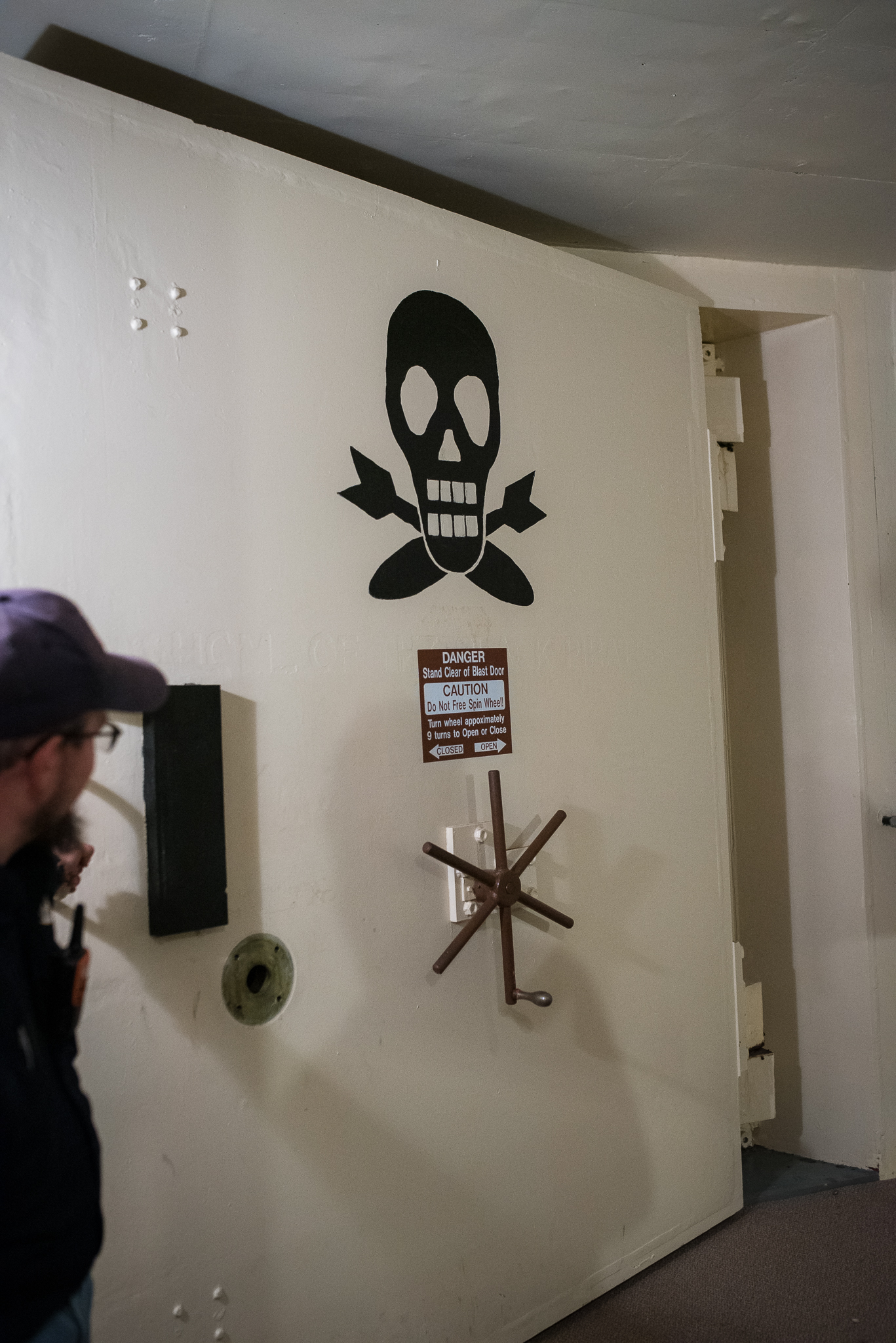
August 30, 2019 / Blogroll
Wyoming Lifestyle blogger and photographer: The Price of Peace; Quebec 01 Missile Alert Facility
What’s the price of peace, really?
Staring at the map showing old missile silos and command centers was a bit staggering. Weapons of destruction littered the plains of southeastern Wyoming, western Nebraska and northern Colorado, some literally just a mile from our home.
The missiles, minuteman and then later MX missiles, as the United States Air Force called them, were missiles armed with 10 nuclear warheads apiece, capable of traveling 15,000 miles per hour with a max range of 6,000 miles and an accuracy of about 300 feet. They could be launched, fired over the North Pole and hit Russia before a single episode of Cheers was completed.
Staggering.
Those were my thoughts, at least, as my family toured Wyoming’s newest historic site, the Quebec 01 Missile Command Center. The site is a decommissioned USAF site where 10 MX missiles were controlled and monitored. It’s now been declassified and is open to the public. And it’s a hell of a tour both physically and historically.
I grew up in Cheyenne, a stone’s throw from FE Warren Air Force Base. We were also family friends with a number of ranchers in the area affected by the silos’ placement. Starting in the 1950s, the government used the power of eminent domain to seize private ranchlands to build missile launch pads. In high school, I even knew kids that would sneak onto the missile silos to drink alcohol and party.
So I’m no stranger to the silos or the missiles, in theory. But the stark reality of what was under our feet didn’t hit home as a kid. Southeastern Wyoming and our neighbors were the epicenter of the country’s nuclear defense shield. Yes, they were, and still do, designed to act as deterrents. But still…
Our tour included a trip underground to the official missile command pod. Built fifty feet under the earth, the pod included two massive blast doors and sat platforms held by shock absorbers designed to withstand a bomb dropping above earth. The thought was if Russia fired on us, we wanted to make sure we could fire back.
Our tour guide was amazing. We also shared our tour with a retired serviceman who was stationed at Quebec 01 in the 1970s. Together, they described what life at the command center must have been like. It’s a typical military compound…stark, a bit bleak and isolated. My favorite anecdote was how the two crewmen stationed in the underground command pod were at the mercy of their aboveground counterparts to select their television station because they didn’t have a separate feed. If you’d made your surface-dwelling companions angry, they’d stick you with the Hallmark or Lifetime movie channel while they slept.
The tour was pretty lighthearted and fun. It was easy to laugh at the old, outdated equipment and computers. They looked like relics from an Austin Powers movie. Except these were the tools that could have started the next world war. Even my 7-year old was perceptive enough to ask the big question.
“What’s a warhead?”
Outdoor Guy explained it was the actual bomb that was strapped to the missile that our government could use if we in a war with another country.
“Like to kill people?” she whispered as we moved down the chilly corridor back to the elevator.
Government officials touted the MX as playing a crucial role in helping end the Cold War. I’ve read enough history books to know that our missile defense system was only a small part of the full story.
Even if you aren’t a giant history nerd like me, the Quebec 01 site is worth a trip. It’s different than most state historic sites because it deals with recent history…and that history affects our relationships still today.
As Wyokiddo and I drove home from town the other day, I pointed a decommissioned command center and silo site out to her. Some were visible from our backyard. Literally.
“Are we safe, Momma, with all these bombs around?” she asked. “That’s kind of scary.”
“Yeah, baby, it is a little scary. I think they are as safe as they can be. And our leaders think they help keep the world safe, too.”
But there are still around 400 active missiles in the US arsenal, many still located around southwestern Wyoming. Are we safe with all these bombs around? I sure hope so.
But the devestation that the world can unleash upon itself in a moment’s notice is Staggering. Positively staggering.
“A nuclear missile silo is one of the quintessential Great Plains objects: to the eye, it is almost nothing, just one or two acres of ground with a concrete slab in the middle and some posts and poles sticking up behind an eight-foot-high cyclone fence: but to the imagination, it is the end of the world.” Ian Frazier, Great Plains, 1989












